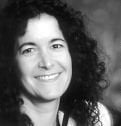CVD Treatment: Making Sense of New Guidelines
Emily Kane, ND, LAc
Cardiovascular disease (CVD) remains the leading cause of premature death in the United States and worldwide.1,2 Typically, the major deficits in CVD are hypertension and the inability of the left ventricle to effectively pump oxygenated blood. Arrhythmias also contribute to CVD mortality, particularly atrial fibrillation, which is increasingly diagnosed and – according to most conventional sources – dramatically raises stroke risk.3 As a result, many more seniors are anti-coagulated, which significantly increases risk for hemorrhagic tragedies. Three major CVD risk factors – hypertension, left ventricular myopathy, and arrhythmias – will be addressed in this update.
Consider the arresting data from the 2011 World Health Organization Global Atlas on CVD Prevention and Control, showing that CVD accounts for 31% of deaths worldwide: 17.5 million deaths in 2012, projected to increase to 23.3 million deaths in 2030.4 The American Heart Association (AHA) projects that by 2030, more than 40% of the US population will have some form of CVD, with total direct costs projected to increase from $273 billion to $818 billion, and real indirect costs – because of lost productivity – projected to increase from $172 billion to $276 billion.5
“We are not preventing CVD, and the worldwide prevalence of risk factors predicts a grim future,” said Dr Brian W. McCrindle (a staff cardiologist at the Hospital for Sick Children in Toronto) at a recent International Society on Thrombosis and Haemostasis congress.6 “One of the biggest problems is that we don’t give health and we don’t give prevention their fair due,” Dr McCrindle continued. “We spend proportionately more health care dollars on providing care for acute and chronic illnesses, much of which are preventable. Our expenditures are growing, leaving little for prevention, and even less for children.” Prevention includes helping smokers quit, and mitigating against diabetes, obesity, and poor food choices.
Hypertension
About 18 months ago, the Eighth Joint National Committee on Hypertension Diagnosis and Management made a landmark pronouncement recommending raising the systolic threshold to 150 mm Hg for adults 60 years or older, unless the patient also has diabetes or chronic kidney disease (CKD), in which case the upper limit for systolic should remain at 140 mm Hg.7 Previously, only older elders (above age 80) were “permitted” to have systolic readings up to 150 mm Hg, as it has been well established – mostly in hospital settings – that aggressively controlling blood pressure to below 140/90 mm Hg creates more harm than benefit. The recommendation to allow non-diabetic, non-CKD patients over age 60 to have systolic readings up to 150 mm Hg was published in JAMA on February 5, 2014. This released a firestorm of varying degrees of outrage and concern among physicians worldwide. A specific and oft-cited concern was the specter of increased stroke risk, because hypertension is a leading cause of stroke, or so we think. A panel appointed by the National Heart, Lung and Blood Institute suggests a systolic pressure below 150 mm Hg for those older than 60.8 The AHA and other groups maintain that systolic pressures should remain under 140.9
What is an Optimal Systolic BP?
Nearly 60 million Americans take pharmaceutical antihypertensive drugs, but researchers do not agree on optimal blood pressure readings. Some say that as patients age, blood pressure naturally rises to ensure optimal blood flow to the brain. Others say that high blood pressure at any age damages the brain and causes transient ischemic attacks (TIAs) and mini-strokes. The results of a large and rigorous study funded by the NIH (SPRINT) are expected in 2017.10 Researchers are following approximately 9000 middle-aged and older adults with hypertension. Half were randomized to push their systolic readings to below 120 mm Hg, while the other half of the cohort is allowed systolic readings up to 140 mm Hg. The study aims not only to assess risks of infarction, stroke, and kidney damage, but also progression to dementia and other neurodegenerative diseases. SPRINT will hopefully elucidate 1 of 3 possible outcomes: 1) that a systolic of below 120 mm Hg is always better than below 140 (which will change the current guidelines); 2) that a systolic below 120 is not better than below 140 (current controversial guidelines); or 3) that pushing systolic to below 120 is actually harmful.
The current trend in geriatrics is to let the systolic blood pressure drift up to 150 mm Hg. When antihypertensive drugs first came onto the market in the 1950s, physicians were generally instructed to prescribe to control systolic measurement to 100 plus the person’s age.11 The conventional wisdom at the time was that vessels stiffen with age and higher pressure was required to maintain optimal circulation. To quote Dr William Cushman, chief of preventive medicine at the VA Medical Center in Memphis, “the general thinking – incorrectly – was that as you get older, the systolic naturally goes up to supply the brain with blood.”12 Now we know that the plumbing is more complex, and have 6 decades of using drugs to mitigate hypertension. But heart disease remains the leading cause of premature death in the United States. Cushman offers a partial explanation: “The epidemiology is consistent that having a systolic pressure of 120 or even below 120 is associated with reduced cardiovascular mortality. But that doesn’t necessarily mean that treating with medications to reach that level will give you that benefit.”12 The concern is that drugs always have undesirable side effects, and that blood pressure lowered with drugs is not necessarily as advantageous as a naturally lower reading.
Looking Beyond the Numbers
One of the problems with the vast majority of blood pressure studies is that this is the only parameter assessed in trying to develop guidelines. In general, blood pressure trials look at only blood pressure. But clearly some people are at lower risk than others, even though they have the same blood pressure. Yet all are treated the same, in a conventional setting. As naturopathic physicians, we can take a broader view of our patient’s cardiovascular risk factors and finesse our protocols. Many patients will not receive coaching and deep education to achieve the usually necessary weight loss and boosting of daily exercise, until they seek care from a naturopathic doctor. Judicious diet and exercise protocols have been shown to be more cardioprotective than any single drug or drug combination.13 Patients who consume the requisite amounts of fresh fruits and vegetables on a mostly daily basis have few problems with hypertension, and are able to take in larger amounts of salt as they age because of their good dietary habits. As we know, the elderly tend to lose salt, which becomes a problem for other conditions such as dehydration.
I have observed in a practice of 20+ years that women are prone to hypertension from vasospasm, often from low magnesium status, or from anxiety, the symptoms of which are produced by hair-trigger secretion of the extremely vasoconstricting catecholamine, adrenaline. These root causes are best addressed not by drug therapy, but by supplementing with magnesium, and using stress-relieving tactics such as meditation. Men are more likely to suffer atherosclerosis, especially if they are single or have endured high-stress work, such as military deployment. Lack of the fresh healing pigments in vegetables and fruits in the diet will reduce the ability of the endolethium to self-repair, thus making the inner surface of the vessels stickier in attracting calcium and bacteria. Once plaque is established, chelation (with DMSA or EDTA) can be a very effective way to reduce the plaque, thus reducing the hypertension created by the partial stenosis.
Until patients achieve the lifestyle which permits optimal blood pressure, Rauwolfia serpentina is an effective herbal remedy in the 25-125 mg daily dose range. Occasionally, in patients who are prone to depression, Rauwolfia can exacerbate depressive mood, and the clinician should be alert to this possibility. Otherwise, it is reliably effective in reducing hypertension and can be weaned easily when the patient is ready. The mechanism of Rauwolfia is similar to that of a beta-blocker, but does not produce the droopy fatigue that is frequent with atenolol, propanolol, and the like. Many hypertensive patients will present with calcium-channel blockers in their drug regimen. It is fun to educate them about magnesium as a safe, cheap, and effective alternative that will not produce a nagging cough. However, because magnesium can cause loose stools, the dosing should be approached gradually.
Left Ventricular Failure
Heart failure is a leading cause of death and disability in adults. It is a condition in which the heart can’t pump enough blood to meet the body’s needs. Heart failure develops over time as the heart’s pumping action grows weaker. The leading causes of heart failure are diseases that damage the heart, such as coronary heart disease and high blood pressure. Most of the “news” coming out of the FDA around reducing the cardiac morbidity documented in 5.1 million Americans (2012 data) is about the latest, greatest drug. A July 2015 news blast from an online medical journal was promoting the drug ivabradine, recently approved to treat “certain people who have long-lasting heart failure caused by the lower-left part of their heart not contracting well,” despite “common” drug side effects including atrial fibrillation, bradycardia, and vision disturbances.14
How is this acceptable? And how is it that rampant statin prescriptions, a class of drugs well known to cause myalgias, is acceptable in a population that likely already suffers cardiomyopathy? In the past decade it has become trendy to prescribe drug “cocktails,” generally involving multiple classes of pharmaceuticals for a given organ failure, in what appears to be a shotgun approach to reaching target guidelines for “standard” care. Mindlessly pushing total cholesterol to under 200, and blood pressure to under 120/80, risks creating new problems without improving the health of the individual. Polypharmacy will always increase the risk of dangerous side effects. Moreover many US healthcare consumers, particularly the elderly, have given over their care to specialists who treat single organ or disease systems and may lack the ability to view the patient’s life and well-being in totality. This problem stems in large part from specialists being much better compensated than family or geriatric physicians.15
A Smarter Approach
The best therapy for left ventricular failure is a lifelong exercise habit that begins in childhood. Promoting sports programs in public schools and removing trans fats from school lunch programs would be an excellent use of our healthcare dollars. Prevention will always be the most beneficial, the most humane, and the most cost-effective approach to healthcare policy. However, to quote Dr McCrindle again, “We may never have direct evidence that detection and management of risk factors in children reduce CVD events in adults, since a 50- to 60-year-long randomized trial can never be done.”6 Nevertheless, we can create a case for prevention if we muster the will. We can evaluate early disease using noninvasive ways of measuring subclinical atherosclerosis, including ultrasound to assess endothelial function, arterial stiffness and intima-media thickness, and ultrafast computed tomography to detect coronary artery calcium.
For patients already in or approaching left ventricular failure, naturopathic remedies include the inotropic effect of Crataegus (2-5 g daily) and CoQ10 (at least 300 mg daily), ideally in liposomal form, to promote cellular oxygenation, thus relieving the pump of some responsibility for oxygen perfusion. Other herbal medicines that work well to tone the left ventricle include Cactus, Inula, Astragalus, and Convallaria.
Atrial Fibrillation
It seems most humans have the capacity to produce atrial fibrillation (A-fib). Most often, the ectopic fibers which create this arrhythmia reside in the pulmonary veins.16 For chronic A-fib, I believe electrocautery or cryo-ablation is the superior treatment, although about 25% of candidates will need a second ablation. All the anti-arrhythmic pharmaceuticals have nasty side effects, such as chronic bronchitis and cataract formation from amiodorone.
For mild or infrequent A-fib, and other arrhythmias such as PSVT (paroxysmal supraventricular tachycardia) and PVCs (premature ventricular contractions), the use of tincture of Cactus can effectively reduce arrhythmic disturbance. Cactus (aka Selenericus grandiflora) can be combined effectively with Leonorus cardiaca or Lycopus. Cold face dips can break an arrhythmia. Homeopathic glonoine may also stop an arrhythmic run, especially if presenting with mild angina. Severe angina is a potential emergency and should be treated as such.
Most patients with documented A-fib who have been worked up by a conventional physician will be on some kind of anti-thrombotic therapy, such as warfarin or a fancy expensive drug such as dabigatran. All pharmaceutical anticoagulants increase risk of death by hemorrhage. This is a particularly germane consideration for an elderly patient who may have difficulty with gait or balance. Typically, INR (international normalized ratio) is the test of choice to assess appropriate clotting time in a patient at risk for stroke due to A-fib. A bleeding time test in real time is more precise but somewhat more complex to perform. Patients who need to remain on anti-thrombolytic therapy should be advised they can reduce healthcare costs and scheduling by requesting home INR kits. An effective antithrombotic, widely used in the naturopathic community, is nattokinase that is standardized for fibrinolytic activity, up to 15 000 UF per day. Fish oil can also decrease blood viscosity (2-3 g daily, ideally cold-pressed from wild salmon species), as can pycnogenol (100-200 g daily), Gingko biloba (standardized to contain 24% heterosides, 120 mg daily) and vitamin C to bowel tolerance. In a recent article published in the Natural Medicine Journal, Jacob Schor discussed the advantages of extra-virgin olive oil (not just “regular” olive oil) for treating A-fib, 3-4 tbsp daily, uncooked.17
 Emily Kane, ND, LAc, is a graduate of Bastyr University in Seattle (class of 1992), where she completed both the Naturopathic and Acupuncture/Oriental Medicine programs. Her preceptor work took place in Seattle, West Virginia, and China, with emphasis on gynecology, counseling, herbal medicine, and naturopathic manipulation. She worked as a licensed massage therapist in Seattle during her medical training for 7 years. Dr Kane maintains an active clinical practice in Juneau, Alaska, and sees patients of all ages. You can learn more about Dr Kane at http://www.DrEmilyKane.com/.
Emily Kane, ND, LAc, is a graduate of Bastyr University in Seattle (class of 1992), where she completed both the Naturopathic and Acupuncture/Oriental Medicine programs. Her preceptor work took place in Seattle, West Virginia, and China, with emphasis on gynecology, counseling, herbal medicine, and naturopathic manipulation. She worked as a licensed massage therapist in Seattle during her medical training for 7 years. Dr Kane maintains an active clinical practice in Juneau, Alaska, and sees patients of all ages. You can learn more about Dr Kane at http://www.DrEmilyKane.com/.
References:
- Nichols M, Townsend N, Scarborough P, Rayner M. Cardiovascular disease in Europe 2014: epidemiological update. Eur Heart J. 2014;35(42):2950-2959.
- Berry JD, Dyer A, Cai X, et al. Lifetime risks of cardiovascular disease. N Engl J Med. 2012;366(4):321-329.
- Lip GY, Lowe GD. ABC of atrial fibrillation. Antithrombotic treatment for atrial fibrillation. BMJ. 1996;312(7022):45-49.
- Mendis S, Puska P, Norrving B, eds. Global Atlas on cardiovascular disease prevention and control. World Health Organization; World Heart Federation; World Stroke Organization. 2011. Available at: http://whqlibdoc.who.int/publications/2011/9789241564373_eng.pdf. Accessed July 1, 2015.
- American Heart Association. Cost to treat heart disease in United States will triple by 2030. American Heart Association Policy Statement. January 24, 2011. Available at: http://newsroom.heart.org/news/1241. Accessed July 1, 2015.
- Brunk D. Cardiovascular disease prevention should start in childhood. Expert Analysis from the 2015 15th Congress. July 12, 2015. Available at: http://www.pm360online.com/cardiovascular-disease-prevention-should-start-in-childhood/. Accessed July 1, 2015.
- Bauchner H, Fontanarosa PB, Golub RM. Updated guidelines for management of high blood pressure: recommendations, review, and responsibility. JAMA. 2014;311(5):477-478.
- Chobanian AV, Bakris GL, Black HR, et al. The Seventh Report of the Joint National Committee on Prevention, Detection, Evaluation, and Treatment of High Blood Pressure: the JNC 7 report. JAMA. 2003;289(19):2560-2572.
- Lackland DT, Roccella EJ, Deutsch AF, et al. Factors influencing the decline in stroke mortality: a statement from the American Heart Association/American Stroke Association. Stroke. 2014;45(1):315-353.
- Wake Forest School of Medicine. SPRINT: Systolic Blood Pressure Intervention Trial. About SPRINT. Available at: https://www.sprinttrial.org/public/dspHome.cfm. Accessed July 1, 2015.
- Cleveland Clinic. Diseases and Conditions. Myths About Hypertension. February 21, 2000. Cleveland Clinic Web site. http://my.clevelandclinic.org/health/diseases_conditions/hic_Hypertension_High_Blood_Pressure/hic_Myths_About_Hypertension. Accessed July 1, 2015.
- Kolata G. Blood Pressure, the Mystery Number. June 22, 2015. The New York Times. Available at: http://www.nytimes.com/2015/06/23/health/blood-pressure-the-mystery-number.html?_r=0. Accessed July 1, 2015.
- Myers J, Nead K, Chang P, et al. Improved Reclassification of Mortality Risk by Assessment of Physical Activity in Patients Referred for Exercise Testing. Am J Med. 2014;128(4):396-402.
- Corlanor. Side Effects. http://www.rxlist.com/corlanor-drug/side-effects-interactions.htm. RxList Web site. http://www.rxlist.com/corlanor-drug/side-effects-interactions.htm. Accessed July 1, 2015.
- Kane L, Peckham C. Family Physician Compensation Report 2014. April 15, 2014. Medscape Web site. http://www.medscape.com/features/slideshow/compensation/2014/familymedicine [slideshow]. Accessed July 1, 2015.
- Haïssaguerre M, Jaïs P, Shah DC, et al. Spontaneous initiation of atrial fibrillation by ectopic beats originating in the pulmonary veins. N Engl J Med. 1998;339(10):659-666.
- Schor J. Extra Virgin Olive Oil Reduces Atrial Fibrillation Risk. Natural Medicine Journal. 2015;7(3). Available at: http://naturalmedicinejournal.com/journal/2015-03/extra-virgin-olive-oil-reduces-atrial-fibrillation-risk. Accessed July 1, 2015.










